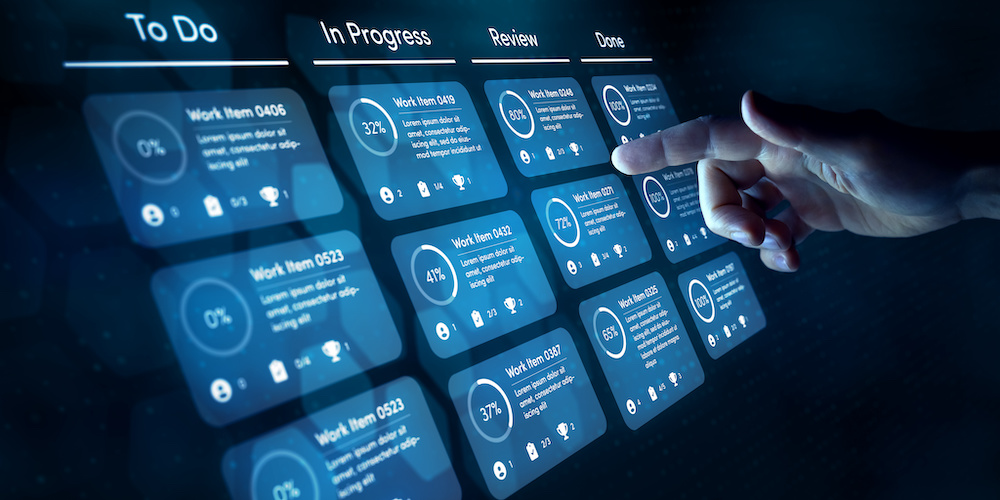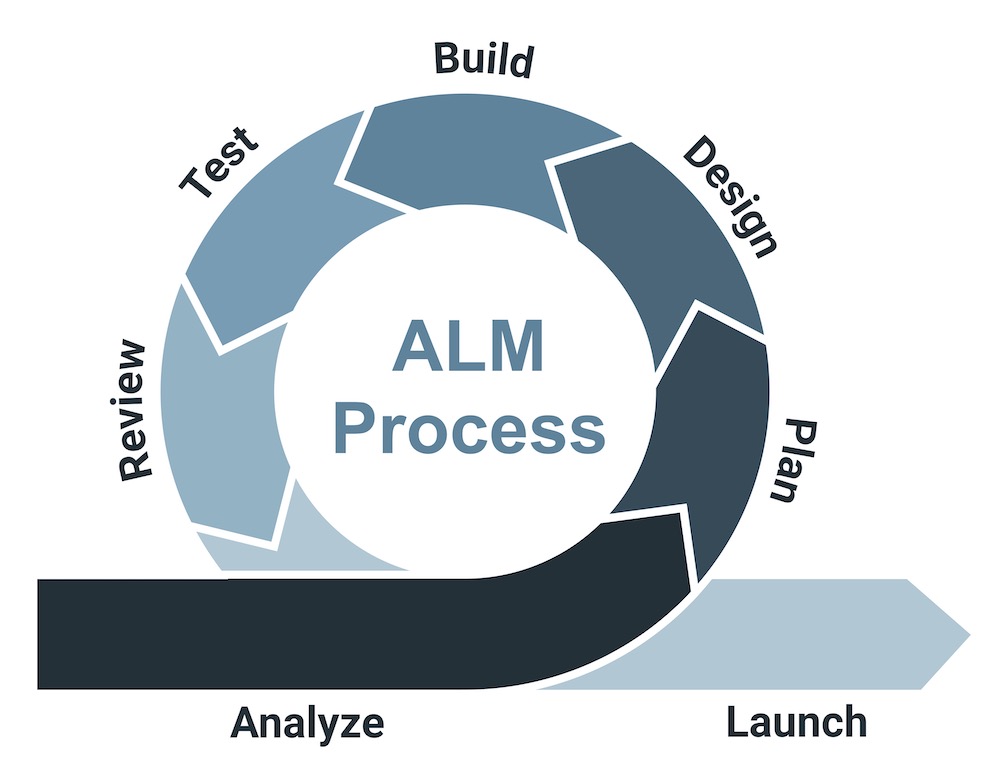This post is part 1 of a three-part series about application lifecycle management (ALM). This part goes over the ALM definition and its context in industrial manufacturing. Then, part 2 explores the benefits of using an ALM solution, and part 3 will explain why you should use an integrated advanced solution, such as Codebeamer, for all your ALM needs.
In today’s connected world, many products are powered by applications and software. While these advancements significantly increase functionality, they present a new set of challenges regarding product development. Products and the applications that run them need to be developed in tandem to satisfy not only customer expectations but a host of compliance requirements as well. Application lifecycle management (ALM) solutions combine people, processes, and tools to develop the software that powers today’s connected products. But what exactly is ALM? Let’s dive in.

ALM Definition
Application lifecycle management (ALM) is a project management solution that combines people, processes, and tools for developing software applications. In the case of industrial manufacturing, it brings together physical product and software development teams to create advanced products. Similar to product lifecycle management (PLM), these tools help manage all aspects of development, from planning to testing and maintenance, and on through to retirement. Organizations that implement ALM benefit from improved quality, optimized productivity, and simplified management.
ALM definition: Application lifecycle management is a project management solution that uses automation to bring together people, processes, and tools for developing software applications.
Who is ALM for?
ALM strategies serve as a framework for creating and deploying the software within products. After deployment, the software is then regularly checked to meet compliance, efficiency, and performance requirements as part of the inherent process. Therefore, using an ALM solution is particularly helpful for highly regulated industries such as automotive engineering.
ALM Stages
Regardless of the preferred solution, traditional application lifecycle management takes users through five stages:
- Define requirements: Before any development can begin, teams and stakeholders come together to align application requirements with business needs. Conditions can be determined by teams but also dictated by compliance and governance requirements.
- Develop the application: Teams begin development once a clear set of requirements has been determined. In this stage, the application evolves from an idea to a design, and emerges as a functioning tool.
- Perform tests: This step often occurs simultaneously with development, especially in highly regulated industries. Testers prepare testing environments before final release and provide performance feedback as needed. Closer to the end of the process, testers must also ensure all the requirements defined in stage 1 have been met.
- Deploy to users: Once the application meets the defined quality and stability requirements, it is released to users.
- Maintain and improve: Once released, teams must monitor, maintain, and fix any bugs that arise as well as plan and manage updates.

By using the ALM process, teams and stakeholders can ensure governance and compliance across the lifecycle, establish methods for managing and controlling development, and complete required testing to meet performance, usability, and security needs.
Completing all five stages of the ALM process ensures proper development and management of your applications.
Getting Started with ALM
Employing a robust application lifecycle management solution keeps you competitive in today’s connected environment. Using ALM helps teams better manage development and ensure that requirements—both internal and regulatory—are met.
Leading solutions, like Codebeamer, offer unique built-in workflows designed to improve collaboration, increase efficiency, and streamline compliance. They also connect development tools to an integrated platform, which means your entire team is referencing a single source of truth during application development. By simplifying complex development processes, teams have everything they need to support:
- Agile project management
- DevOps
- Product line management
- Risk management
- Regulatory review and compliance
- Release management
Interested in learning more about how application lifecycle management (ALM) can improve software development in your organization? Contact us.
